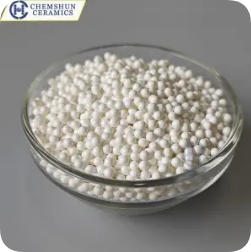1. The greater the spindle speed, the greater the centrifugal force obtained by the grinding media. The greater the speed difference between the grinding media, the greater the shear force and friction force. The greater the rotor linear speed, the less grinding time required to achieve the particle size content percentage
2. The influence of the specific gravity of the grinding media on the efficiency of the sand mill. There are many types of grinding media, and their specific gravity varies. From a dynamic point of view, the greater the specific gravity of the grinding media, the greater the energy it obtains, the impact force and shear force will increase accordingly, and the grinding efficiency will increase. In addition, combined with the specific gravity of the material, the greater the specific gravity difference between the grinding media and the material, the better the grinding effect. Generally, the machine selects zirconium beads (zirconium silicate beads, zirconium oxide beads, pure zirconium beads) with good surface hardness and mechanical strength as grinding media
3. The influence of the diameter of the grinding media on the efficiency of the sand mill. The grinding diameter is related to the maximum particle size of the raw material. The larger the maximum particle size of the raw material, the greater its inherent strength, requiring a large grinding medium diameter so that the grinding medium has sufficient dispersion and grinding ability, but the larger the grinding medium particle size, the larger the particle size of the final product
4. The effect of grinding medium filling rate on grinding efficiency. The larger the grinding medium filling, the greater the grinding medium contact frequency, the greater the dispersion and grinding ability, and the smaller the product particle size in the same grinding time. In addition, the filling rate of the grinding medium is related to the viscosity of the material and the temperature of the material during grinding. For low-viscosity solvents and water-based inks, the filling rate can be slightly larger. After repeated experiments. The filling rate of the wet grinding sand mill is 70%-80% most ideal.
5. Density of grinding media:
Theoretically, under the same conditions, the larger the density of the grinding beads, the greater the impulse, the higher the grinding efficiency, and the wear on the contact parts of the ball mill (inner cylinder, pin rod and dispersion disk, etc.) will also be relatively large. Low-density grinding beads are suitable for low-viscosity slurries, and high-density grinding beads are suitable for high-viscosity slurries.
6. Hardness of grinding media:
Theoretically, under the same conditions, the harder the grinding beads, the lower the wear rate of the beads. For example, from the wear of the grinding beads on the contact parts of the ball mill (inner cylinder, pin rod and dispersion disk, etc.), the grinding beads with high hardness have greater abrasiveness on the contact parts, but the grinding efficiency can be optimized by adjusting the filling amount of the beads, the speed of the sand mill, the flow rate and other parameters.
7. Surface smoothness of grinding media In theory, under the same conditions, the wear rate is inversely proportional to the surface smoothness of the grinding media, so the surface of the grinding media is required to be relatively smooth to reduce the wear rate. While grinding and crushing materials, the grinding beads will also have a certain wear rate. The ground grinding beads will be mixed into the slurry and it will be difficult to separate, which affects the quality of the product. Therefore, in general, the smoother the surface of the grinding beads, the higher the grinding quality.
8. Cooling water temperature Cooling water temperature is also one of the factors that play an important role in the grinding efficiency of the ball mill. When the grinding media is in violent motion, mechanical energy is converted into heat energy, generating a large amount of heat. As the grinding time increases, the temperature also rises. At this time, the material to be ground will coagulate and the quality of the finished product will decrease. The temperature of the cooling water directly affects the working temperature of the grinding chamber, thereby affecting the grinding efficiency. According to some data, under the same other conditions, the grinding efficiency of using 15℃ chilled water is more than 30% higher than that of using 22℃ circulating water. Therefore, proper control of the cooling water temperature can greatly improve the grinding efficiency.
9. The flow rate of the material to be ground should be properly adjusted during the production process. Too fast a flow rate will cause the product particle size to become coarser, and the pressure and temperature in the grinding chamber will be too high. Too slow a flow rate will lead to low production efficiency.
Post time: Apr-14-2025


